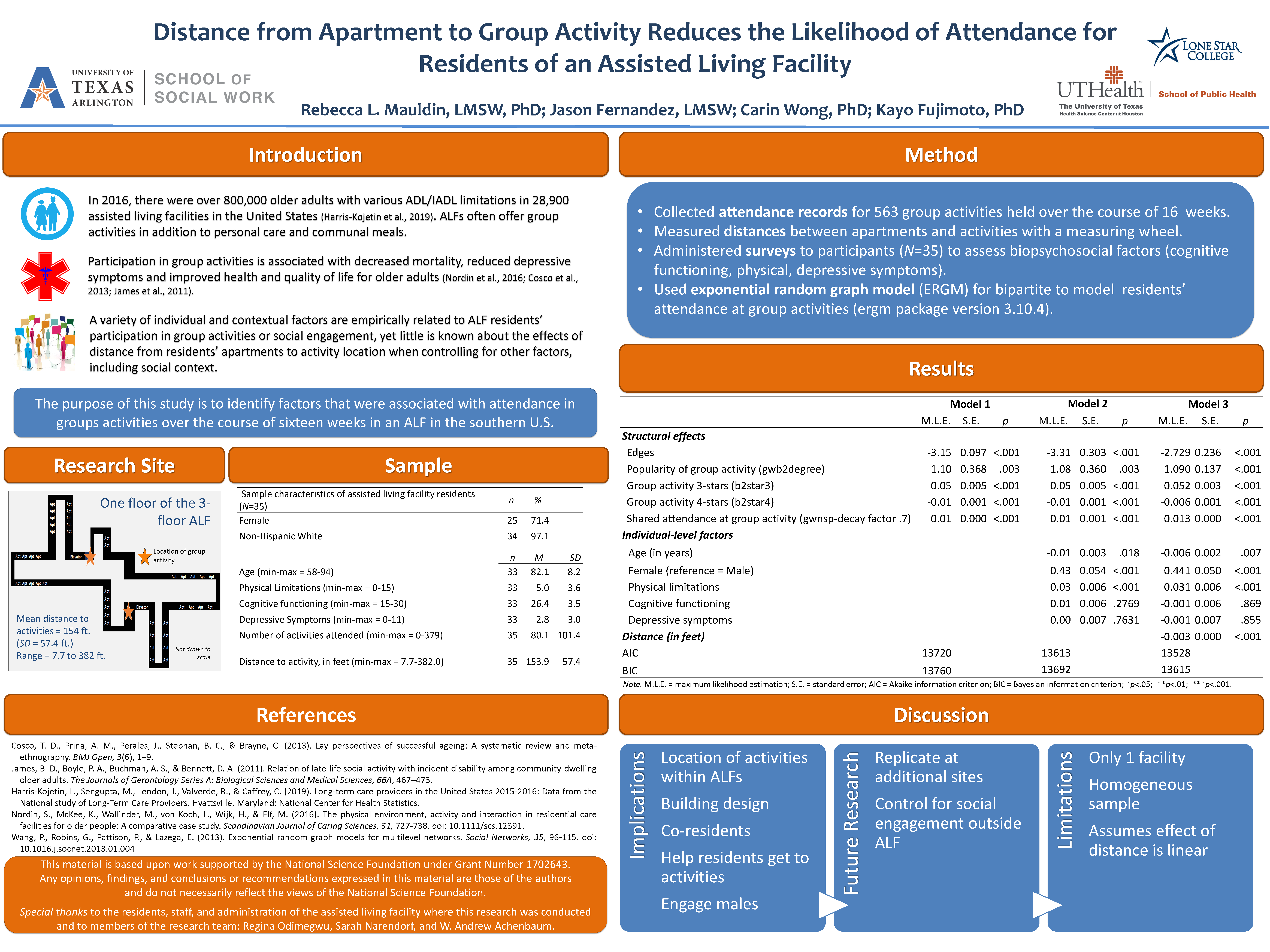
Distance from apartment to group activity reduces the likelihood of attendance for residents of an assisted living facility
Rebecca Mauldin, Jason Fernandez, Carin Wong, Kayo Fujimoto
Social engagement (e.g., participating in group activities) is beneficial for older adults’ mental and physical health. For residents of assisted living facilities who often experience physical or cognitive limitations, attending group activities may be difficult. The physical distance from residents’ apartments to an activity’s location is a potential barrier. However, assisted living facilities provide supportive services such as assistance with mobility which may help overcome the potential barrier posed by the distance to the location of a group activity.
We analyzed assisted living facility residents’ (N=35) attendance at 563 group activities over the course of three months by operationalizing attendance at group activities as a binary bipartite network of residents and activities. In addition, we constructed a 35 x 563 distance matrix of resident and activity location with entries xnm recording the distance between resident n's apartment and the location of group activity m. We estimated bipartite exponential random graph models to assess the effect of individual-level (demographic and health indicators), dyadic-level (distance), and endogenous (i.e., edges, activity popularity, and shared attendance) factors on the likelihood of a resident’s attendance at a group activity.
Our sample were predominantly female (n=25; 71.4%). The residents in the sample were an average of 82 years old (SD = 8.2), had an average of 5 (SD = 3.5) physical limitations to their daily activities (e.g., limitations in preparing meals, doing light housework, walking across a small room, dressing). They had high levels of cognitive functioning (Mini Mental State Exam M = 26.4, SD = 3.5), and low levels of depressive symptoms (Geriatric Depression Scale-15, M = 2.8, SD = 3.0).
Each of the 563 group activities was located in one of seven locations throughout the three-story facility. The distance from residents’ apartments to each location was measured using a measuring wheel. The closest distance between a resident’s apartment and an activity was 7.7 feet; some residents had to travel up to 382 feet to attend an activity (M=153.9 ft.; SD=57.4). Attendance records for each activity were supplied by the facility. Residents attended an average of 80.1 events (SD = 101.4) during the study period. The average size of activities was 5.0 residents (SD = 3.1).
Our results indicate that greater distance to an activity was associated with a lower likelihood of attendance (p < .001). For residents living the average distance from an activity (154’), the odds of attending were 31% lower than for a resident living the closest distance in our sample (8’) to the event. Individual-level factors that were significantly associated with attendance were being female, younger, and having more physical limitations. Cognitive functioning and depressive symptoms were not significantly associated with attendance.
These findings suggest that that physical distance to an activity’s location may be a potential barrier to activity attendance. Implications include facility design, placement of group activities, and devising mobility-related strategies to increase participation in group activities. 
← Schedule

